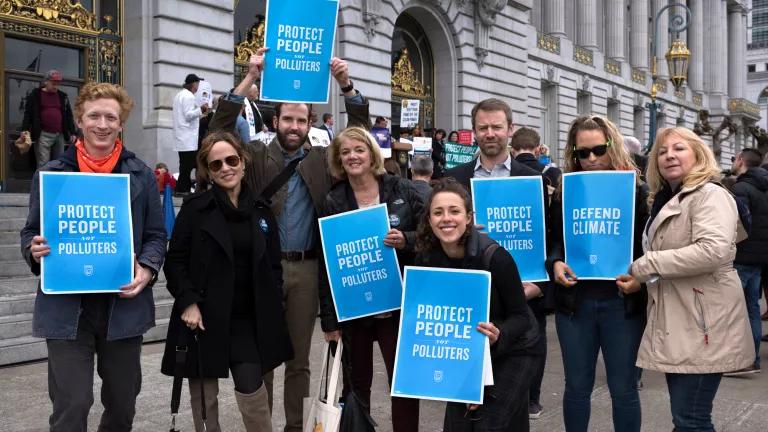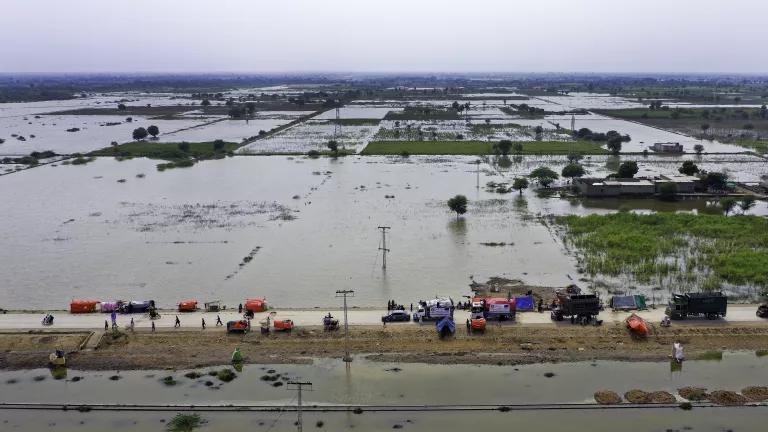Indigenous Land Rights as a Climate Solution

As we celebrate Indigenous Peoples’ Day this Monday, around the world Indigenous Peoples are fighting to protect the forests they have called home for millennia from industrial development. Recognizing Indigenous rights to dictate how their land is used, a new report from the World Resources Institute (WRI) finds, is not just a human rights necessity; it is essential to protecting the world from the worst effects of climate change. Forests store and sequester carbon, and Indigenous Peoples, the report finds, are far better at protecting these forests and their carbon stores than governments or companies. In Canada’s boreal forest, which is particularly carbon-rich, promoting Indigenous-led protection is not only necessary to safeguard communities’ ways of life, but to prevent potentially devastating global climate impacts.
Indigenous Rights and Climate Mitigation Go Hand in Hand
Forests are the “forgotten solution” to climate change. While Elon Musk’s latest clean energy innovations are more likely to make the headlines, forest ecosystems—from lush tropical forests to the majestic boreal—have been quietly regulating the earth’s climate for millions of years, both storing vast quantities of carbon in their vegetation and soils, and sequestering carbon from the atmosphere. Yet, industrial development is taking a dramatic toll on forests around the world, undermining their ability to act as our allies in the fight against climate change and releasing their immense stores of carbon into the atmosphere.
For millennia, Indigenous Peoples have been the caretakers of these carbon vaults, carefully managing the forests for future generations. Despite centuries of colonialism and dispossession, Indigenous Peoples continue to be the best stewards of forests and their carbon, acting as a bulwark against industry’s voracious appetite for products from intact forests.
Where Indigenous land rights are strong, WRI’s recent analysis found, forest degradation and carbon dioxide emissions are lower. In Brazil, for example, Indigenous community forests saw less than 1 percent deforestation between 2000 and 2012. Outside community forests, that number rose to 7 percent, with 27 times more carbon emissions. The study also found that, when given strong land rights, Indigenous Peoples are better able to improve carbon storage through tree planting and other forest recovery initiatives.
Indigenous Leadership in the Boreal
Indigenous Peoples’ role in protecting and enhancing carbon stores is particularly vital in Canada’s boreal forest. The boreal forest is the most carbon-dense forest biome on the planet. The Canadian boreal, which is one of the world’s last great forests, holds approximately 12 percent of all the earth’s carbon stores. Its plants and soils also remove carbon dioxide each year equivalent the annual emissions of 24 million vehicles.
This extraordinary forest, however, is deeply threatened, particularly due to logging. Between 1996 and 2015, more than 28 million acres of boreal forest were logged, an area approximately the size of Ohio. In addition to jeopardizing iconic species like the threatened boreal caribou and endangering Indigenous ways of life, this logging in the Canadian boreal is devastating for the climate, releasing an estimated 26 million metric tons of carbon each year.
Canada’s governments have so far failed to halt the growing degradation of the boreal forest caused by this intensive cutting. Indigenous Peoples across Canada, however, are stepping in, crafting their own solutions to protect their forest homelands and their immense value to the fight against climate change.
The Moose Cree, for example are working to protect and restore the North French River watershed, which spans 1.6 million acres across Ontario and constitutes 10 percent of the Moose Cree’s traditional territory. In 2002, the Moose Cree declared the North French River to be permanently protected after decades of mineral exploration, logging, and road construction. Ever since, they have defended the area from industrial development, including an exploratory drilling proposal that would have devastated the region.
The Waswanipi Cree in Quebec, meanwhile, have fought for over 15 years to protect the last 10 percent of intact forest left on their territory. Their homeland in the Broadback River watershed is full of old-growth forests that are important to both species and the global climate. The Waswanipi have created a proposed protection plan to safeguard a particularly ecologically and culturally important area of the Broadback called the Mishigamish. However, Quebec has not implemented this protection plan, instead approving logging in the Mishigamish to begin in 2019. The Waswanipi are not giving up, however, and recently staged a demonstration to call on Quebec to protect their last intact forest.
Fort Nelson First Nation in British Columbia has released the first and only caribou recovery plan in Canada to spatially identify and protect critical boreal caribou habitat in compliance with federal law. This "Medzih (Caribou) Action Plan," according to Fort Nelson First Nation Chief Harrison Dickie, was created because “It’s been left up to us to develop a proactive plan to help restore the caribou population before it’s too late, and before any more of our valuable harvesting species are put at risk.”

Canada Needs to Recognize Indigenous Rights
While these communities and many other Indigenous Peoples in Canada have made incredible strides toward protecting the boreal forest and its vast carbon stores, they are fighting against policies and colonial legacies that often hamper their efforts. Courts in Canada have recognized that Indigenous Peoples must be consulted “in good faith” about development on their lands, but this right to consultation does not actually give Indigenous Peoples the right to say “no” to development on their land. As a result, Indigenous land rights in Canada lag behind internationally-recognized human rights standards.
Canada has not fulfilled its commitment to the United Nations Declaration on the Rights of Indigenous Peoples (“UN Declaration”), which requires “free, prior, and informed consent” from Indigenous Peoples prior to allowing any development on their land. Bill C-262, which would incorporate the UN Declaration into Canadian law, has passed in the House of Commons and is now being considered by Canada’s Senate. The bill’s adoption would go a long way toward addressing the weaknesses of Indigenous land rights in Canada.
The WRI report reveals how problematic Canada’s treatment of Indigenous land rights are for the planet. If Canada is serious about addressing climate change, it will fully recognize Indigenous Peoples’ right to free, prior, and informed consent and to dictate the future of their territories. Doing so will create a better future for us all.





